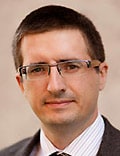It’s a common saying that the personality of a doctor can be predicted by the personality of the staff member who answers the phone. If the person who answers is pleasant and respectful, then it seems likely that the physician is that way, too. Contemporary approaches to team training affirm this. Respectful outward-facing conduct—meaning how patients are treated—and respectful inward-facing conduct—meaning how medical practice clinicians and staff members interact—co-influence each other. Both increase patient safety and mitigate practice risks.
Mutual respect is the cornerstone of a culture of patient safety. The other three foundational elements are teamwork, human factors engineering, and cultivation of a just culture. These four founding elements of safety culture apply equally to a medical office practice as to a hospital, and the benefits will accrue to an office practice, too: Patient and employee satisfaction, fewer adverse events, and a reduction in practice liability risks.
Mutual respect
Imagine this scenario. You hear the physician with whom you share an office shouting at her medical assistant: “Why did you schedule so many patients this afternoon? You know I can’t see this many patients in a row, finish the charts, answer phone calls, and get home for dinner on time!” A staff member who is treated this way for a minor issue fears getting reprimanded for speaking up at all, even when the stakes are higher. (“Doctor, this patient is allergic to penicillin. Are you sure you want to give them this prescription?”) This example shows how psychological safety—which is present when it is easier for an employee to ask a question or to admit, “I don’t know”—directly contributes to patient safety, and thus to reduced risk of medical malpractice litigation.
Something as mundane as scheduling presents a variety of risks for miscommunication, which can become safety risks, then litigation risks. Therefore, creating a climate of mutual respect in which anyone can ask a question of anyone else benefits the patients and the practice.
Or imagine a staff member taking you aside and saying: “We have an emergency here, and also five patients left today—who can be seen next week, and who needs to be seen tomorrow?”
When rescheduling happens, staff need to be comfortable taking the clinician aside. Clinicians can contribute to both mutual respect and patient safety by ensuring that staff know when they will be in-office and available. This sounds basic, but for practices with multiple sites, for instance, it can be complicated. The more clarity staff members have about provider availability, the fewer appointments they will be rescheduling, which shows respect to both staff members and patients.
Consider consulting the Agency for Healthcare Research and Quality’s (AHRQ’s) “Medical Office Survey on Patient Safety Culture,” which contains a segment regarding office culture, mutual respect, and interprofessional performance.
Teamwork
Imagine that a staff member can’t find a crucial test result but also can’t get anyone’s attention to discuss it, given competing pressing concerns. Even if your practice is small enough that a formal communication system feels excessive, consider implementing some systematic elements. This will help you in case of staffing disruption, emergency, safety issue, or potential interpersonal conflict. When practices formalize certain interactions, everyone does less improvising, and the practice moves closer to becoming a high-performance team.
The following are top tools to improve teamwork, taken from TeamSTEPPS®, the crew resource management model for medicine. TeamSTEPPS has adapted its training model specifically for the office practice. Even without the whole course, the AHRQ’s video series demonstrates principles of teamwork in office practice.
Three core leadership tools
TeamSTEPPS prioritizes three core types of team leadership tools: “Briefs are held for planning purposes; huddles are used for problem solving; and debriefs are used for reflection and process improvement.”
Brief example: A five-minute morning gathering to establish who is coming in for care, what missing test results need to be run down and by whom, and so on, can establish a shared mental model for the day’s workflow.
Huddle example:A huddle is a quick interaction to reinforce or revise a plan. When a practice manager or other key staff member flags the clinician to reorganize patient appointments in light of an emergency, for instance, this may be considered a kind of huddle.
Debrief example: A debrief could be structured as a three-minute day-end or week-end gathering, or perhaps a gathering after a particularly complex care situation, and it should relate to team goals or address particular issues.
Check-back—Critical communication tool
During the busy workday, communications can often be rushed, language garbled, and attention distracted — especially if we are wearing masks. This makes it imperative that we confirm important information has been received, especially when this information may impact patient care, such as the ordering of a test, prescribing of a medication, or scheduling of an appointment with another physician consultant. To assure your message has been received, the recipient should repeat back what you’ve said, just as you might hear when ordering takeout from your favorite restaurant: “Please order a CBC with differential, and an ESR.” “Doctor just to confirm, you want me to order a CBC with diff, and a sed rate for this patient?”
Human factors / System factors
Imagine a patient whose physician says, “Tell the front desk you need to schedule a left-knee arthroscopy.” The patient asks one staff member, who calls the ambulatory surgery center (ASC), where the clerk writes a note before entering the procedure into the OR booking system. By the time the patient arrives for the surgery, the left may have turned into a right. When we add steps to a process, its reliability decreases.
By contrast, imagine that the patient is in the room with the doctor, who can enter the left-knee arthroscopy directly into the ASC scheduling system using an iPad, with the patient watching them do it. One step. Device-based workflows are not a panacea, but cutting down process steps makes our processes more reliable.
Just culture
A paper test result falls behind a desk. Now let’s say an ob/gyn finds themselves, months later, calling a pregnant patient to report a positive result for trichinosis. How did this delay happen?
Cultivating a just culture makes it likelier that this practice could answer that question and improve its systems, because health care professionals who experience psychological safety are much likelier to report potential risks. When employees see that it is safe for them to speak up, and when they see their risk-mitigation ideas being responded to, they will be likelier to report risks in the future.
Just culture means consoling a person who has unintentionally committed an error that any similarly trained person could have made in that situation; coaching a person who has drifted into risky behavior; escalating to disciplinary action for those who persist in taking unacceptable risks; creating systems that mitigate risks for human error; and insisting that any person can ask a question or express a concern to anyone else, regardless of rank, at any time.
To begin their just culture journey, if they haven’t already, practice leaders should ask themselves honestly—or perhaps ask their coworkers via anonymous survey: Are people willing to speak up? Are they afraid to admit they made a mistake? If someone reports a risk, do they hear directly that their report is appreciated—and then do they see that appreciation confirmed via investigation or other action?
These four core principles of safety culture apply across specialty and setting, but the guidelines suggested here are not rules, do not constitute legal advice, and do not ensure a successful outcome. The ultimate decision regarding the appropriateness of any treatment must be made by each health care provider considering the circumstances of the individual situation and in accordance with the laws of the jurisdiction in which the care is rendered.
David Feldman, MD, MBA, FACS, is the chief medical officer for the Doctors Company and TDC Group, also serving as executive vice president at Healthcare Risk Advisors (HRA). A renowned patient safety advocate, he has spoken with numerous leaders in the field of patient safety for the new Leading Voices in Healthcare podcast.
Source: https://www.physicianspractice.com/





